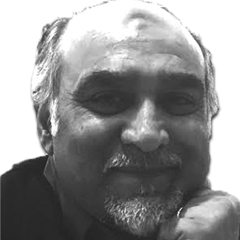
Social media war rooms set up by political parties have become a battleground to troll rivals. Political parties are using several methods including Facebook page likes, Twitter followers, digital campaigns, videos and statements against rivals to establish that they are the most trusted and followed party in the digital space. These parties used to place a significant amount of effort into one method, now they can create hundreds, and if only three go viral then it has been worth it. Parties which spend generously on social media and digital campaigns should not refuse to divulge details to election commission about such expenditure.
Many political parties are using social media nowadays for strengthening their popularity and vote bank. Facebook and Twitter are the new battlegrounds with WhatsApp proving no less to be an effective tool for these parties. In addition, they have acknowledged the role of mass media in getting their message across to voters. TV has taken the space of political rallies.
Against the backdrop of troll wars on social media where PTI has chosen to express often ignored opinions, PML-N has come up with an extreme and ill-conceived idea of acting against PTI chairman Imran Khan under cybercrime and defamation laws for allegedly trying to influence the Supreme Court’s judgement in the Panama Papers case. PML-N’s social media team believes that Imran Khan has amassed a large force of online supporters for countering rival groups at a short notice.
It is true that old school media also tended to divide readers. In Pakistan, not many people read printed newspapers but the echo chamber effect of social media can lure parties into thinking as if they are gaining support when only reaching ardent followers. There are no signs social media is softening the global disenchantment that electorates feel about political elites.
Since the General Elections of 2013, major political parties of Pakistan such as the PPP, MQM, PTI and PML-N have developed their media cells which defend the viewpoint of their respective parties. These cells also propagate the vision and mission of their parties, if they have, and act as a marketing tool. Social media cells of political parties are divided into different sections or wings including public relations department, external publicity wing and research department
It is a form of ‘online application platform’ through which political parties facilitate interaction, collaboration, and sharing of content that is important for both political parties and critics. Moreover, they can use the cyber space to identify and implement tweeting capabilities with a reasonable expectation so that these initiatives would align with their party’s strategy. Critics, however, rush towards their keyboards to condemn political parties for tasteless opportunism when contents of the campaign have been left unfiltered by their social media advisers.
While MQM is currently in shambles; the other two major political parties, the PML-N and PTI, have invested quite an effort in their social media cells. The larger consensus is that the internet is still an urban phenomenon, and therefore, somehow, unimportant. Since the rural digital penetration is increasing, the flip side is that urban penetration has allowed cities to become a litmus test of what could happen if the rural population was able to access the internet during election period.
Federal government and opposition parties are taking advantage of such systems. The government, for example, has hired hundreds of workers to spread pro-PML-N propaganda on social media in the form of trolls. Then there is the problem of the ‘filter bubble’. Sites such as Facebook are increasingly tailoring content for consumers to restrict us from seeing certain posts. This makes it less likely that anyone will encounter material challenging their world view.
Social media cells can use a scattergun approach to the internet in a way that they could not with traditional media sources. In days gone by, a politician might simply give an interview or an opinion piece to a state television station or newspaper. However, newspaper sales are in decline and state TV is just a mouthpiece of government policies. Not only that, the old system of media gatekeepers has its critics on all sides which accuse newspapers of slavish adherence to the agendas of their owners. Hence, politicians are increasingly relying on social media.
A well-organised social media surge can recruit members and generate excitement faster than ever before. But social media cannot begin to explain, at root level, for why politics today is in such turmoil. It is a magnifier of events but it doesn’t change the fundamentals. We live in an age of social media, a medium that has changed how we all communicate.
Journalists and politicians have mainly remained at loggerheads with social media increasingly being used by politicians to change the traditional relationship between the two. An overly negative media that portrays politicians as ‘criminals’ has a lot to answer for. There is no doubt that there is a long history of politicians manipulating people through propaganda but we should be concerned about the way social media’s algorithms appeal to emotions rather than facts and evidence.
The writer is a professor of Psychiatry and Consultant Forensic Psychiatrist in the UK. He can be contacted at fawad_shifa@yahoo.com
